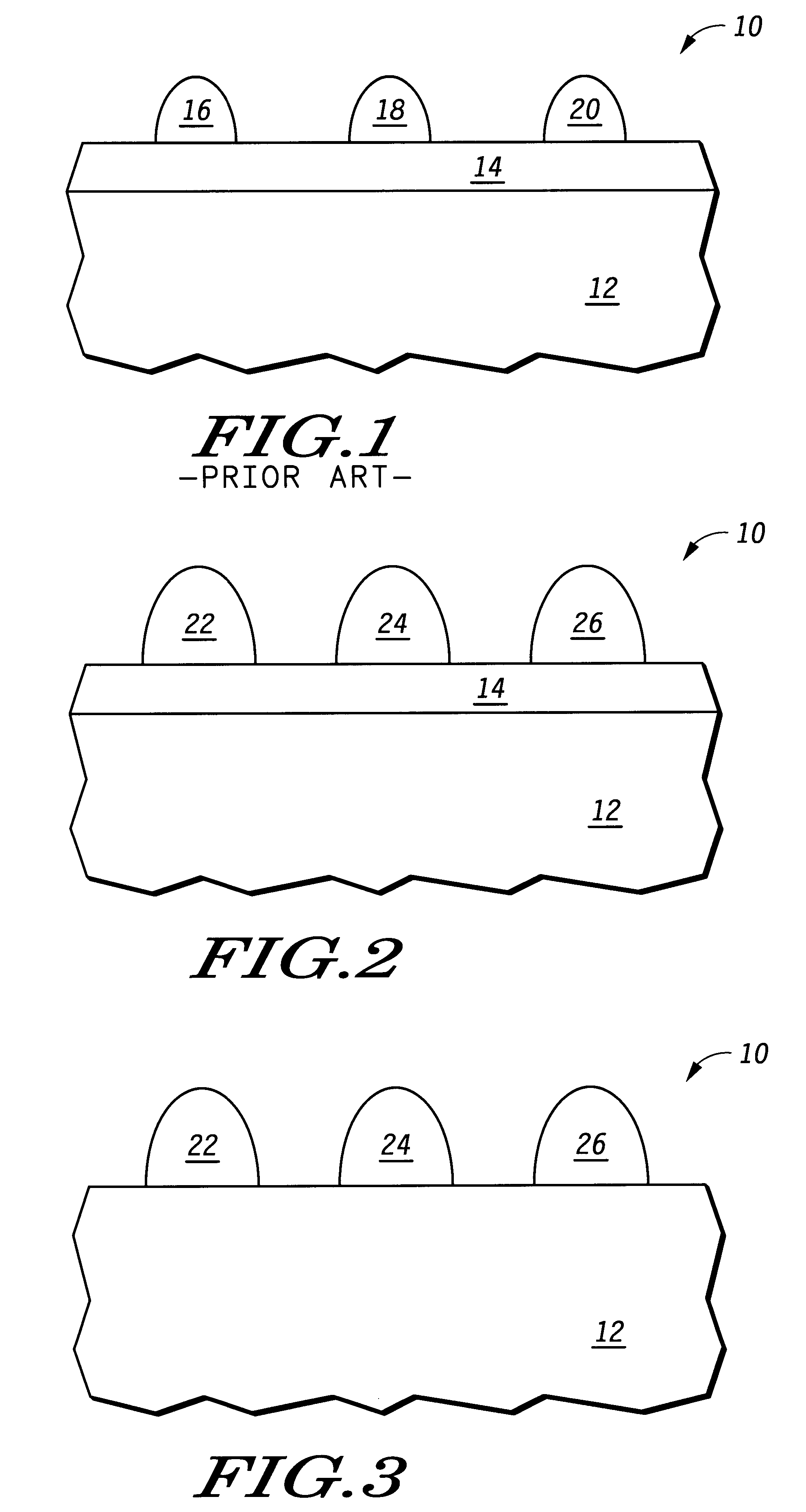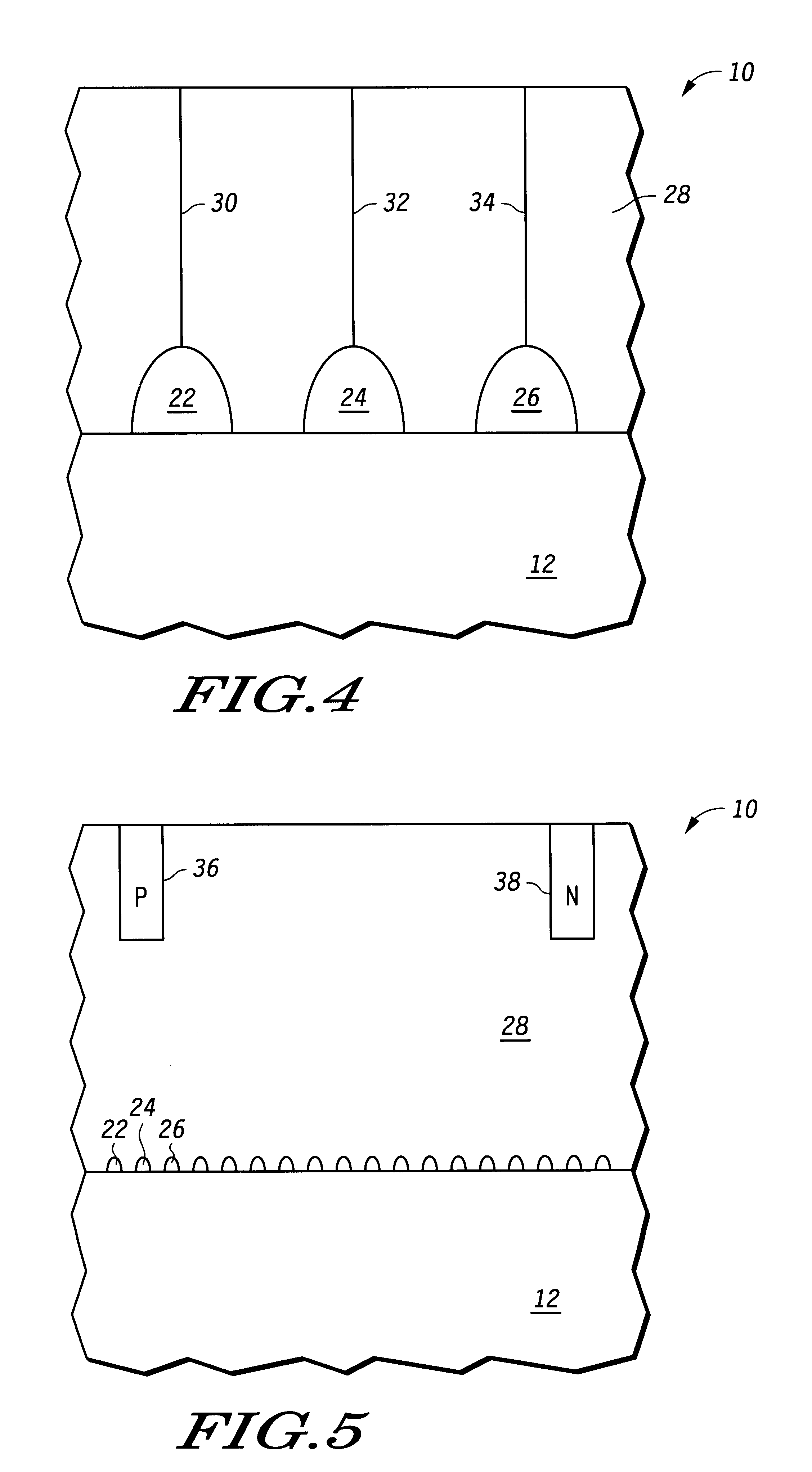Semiconductor device and method therefor
a semiconductor and device technology, applied in the field of semiconductor device manufacturing, can solve the problems of mismatching crystalline structure of overlying semiconductor material, formation of misfit dislocation, and 4 percent mismatch in lattice constant of crystalline structur
- Summary
- Abstract
- Description
- Claims
- Application Information
AI Technical Summary
Problems solved by technology
Method used
Image
Examples
Embodiment Construction
In one embodiment a photodetector using heteroepitaxial layers is formed in a portion of an integrated circuit using silicon nanocrystals that are formed relatively close together over a silicon substrate. These nanocrystals are completely oxidized to form insulating islands over the silicon. A subsequent etch back exposes the underlying silicon but leaves the insulating islands as masks for beginning a selective epitaxial growth of germanium over the silicon. The germanium grows and immediately forms misfit dislocations a short distance from the surface of the silicon. These misfit dislocations run a short distance above and parallel to the silicon substrate and are terminated at the insulating islands. The epitaxial growth continues and ultimately comes together at the top of these insulating islands. There may be a grain boundary formed at the top of each insulating island. The insulating islands are close enough together so that the misfit dislocations terminate on these islands...
PUM
 Login to View More
Login to View More Abstract
Description
Claims
Application Information
 Login to View More
Login to View More - R&D
- Intellectual Property
- Life Sciences
- Materials
- Tech Scout
- Unparalleled Data Quality
- Higher Quality Content
- 60% Fewer Hallucinations
Browse by: Latest US Patents, China's latest patents, Technical Efficacy Thesaurus, Application Domain, Technology Topic, Popular Technical Reports.
© 2025 PatSnap. All rights reserved.Legal|Privacy policy|Modern Slavery Act Transparency Statement|Sitemap|About US| Contact US: help@patsnap.com



